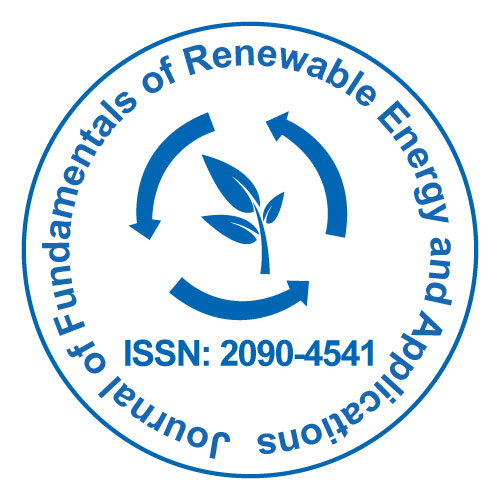
Journal of Fundamentals of Renewable Energy and Applications
Open Access
ISSN: 2090-4541

ISSN: 2090-4541
Massimo Guarnieri
University of Padua, Italy
Keynote: J Fundam Renewable Energy Appl
The characterization of fuel cells involves a number of physical parameters which are important for quantifying and comparing the performance of the materials and for trimming analytical and numerical models. Careful ex situ measurements of such parameters can be performed by means of a number of diagnostic techniques, whose results are however not completely consistent with fuel cell operation due to several side effect. Conversely, in situ measurements can provide meaningful operational values, but a very few techniques are available to determine a limited number of parameters. An alternative consists in multiple parameter identification from multiple fundamental measurements performed in different conditions, e.g., at different temperature, pressure, concentration, and humidification. If there is only one unknown parameter, the solution is easy, requiring just a statistical interpolating technique. In the case of multiple unknown parameters, the problem becomes increasingly challenging with the number of parameters, as duplicity problem emerges, i.e., several groups of parameters may lead to the same performance (e.g. polarization curve). A number of numerical tools have been proposed to face this kind of problems. Stochastic mathematical models have been applied to the analysis of fuel cells for more than ten years, but typically to specific problems and by means of semi-empirical models, with an increased number of articles published in the last years. We present an original formulation that makes use of an accurate zero-dimensional multi-physical model of a polymer electrolyte membrane fuel cell and of two cooperating stochastic algorithms, particle swarm optimization (PSO) and differential evolution (DE), that proved to be successful in extracting multiple material parameters (exchange current density, mass transfer coefficient, diffusivity, conductivity, and activation barriers) from the experimental data of multiple polarization curves (i.e., in situ measurements) under controlled temperature, gas back pressure and humidification. The method is suitable for application in other fields where fitting of multiphysics nonlinear models is involved.
Massimo Guarnieri completed his MS degree in Electrical Engineering at University of Padua, Italy, in 1979 and his PhD degree in Electrical Science in Rome in 1987. He joined Italian National Council of Research in 1982 and University of Padua in 1983, where he has been Full Professor of Electrical Engineering since 2000. Initially, he worked on devices for thermonuclear fusion research. He later centered his research interests on electromagnetic computation. In the last ten years, he has been involved in modeling and designing electrochemical storage devices. He is interested in the history of technology and science. He is a Columnist and a member of the Editorial Board of IEEE Industrial Electronics Magazine.